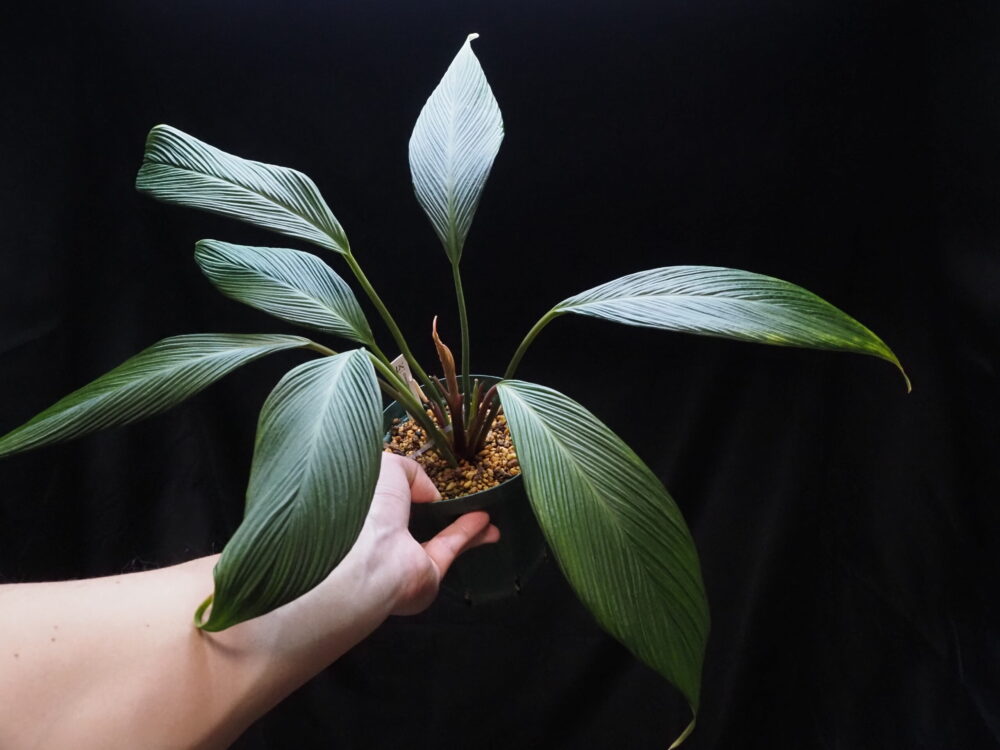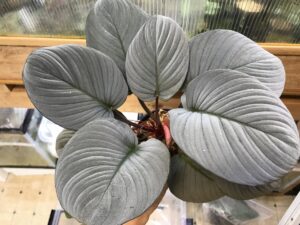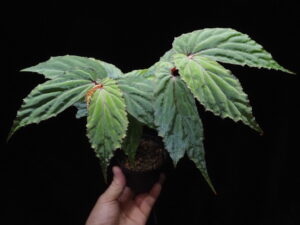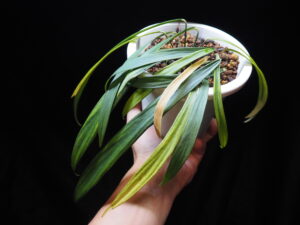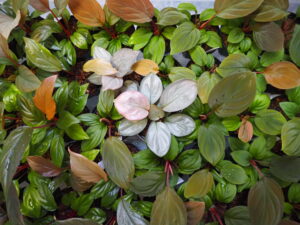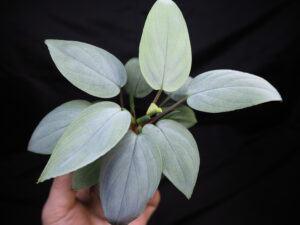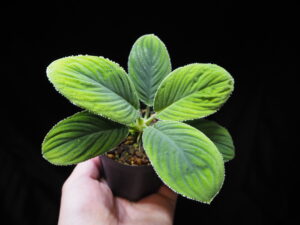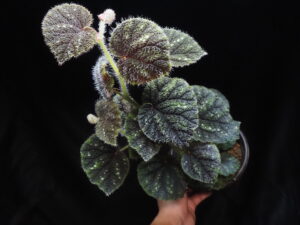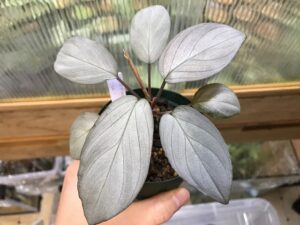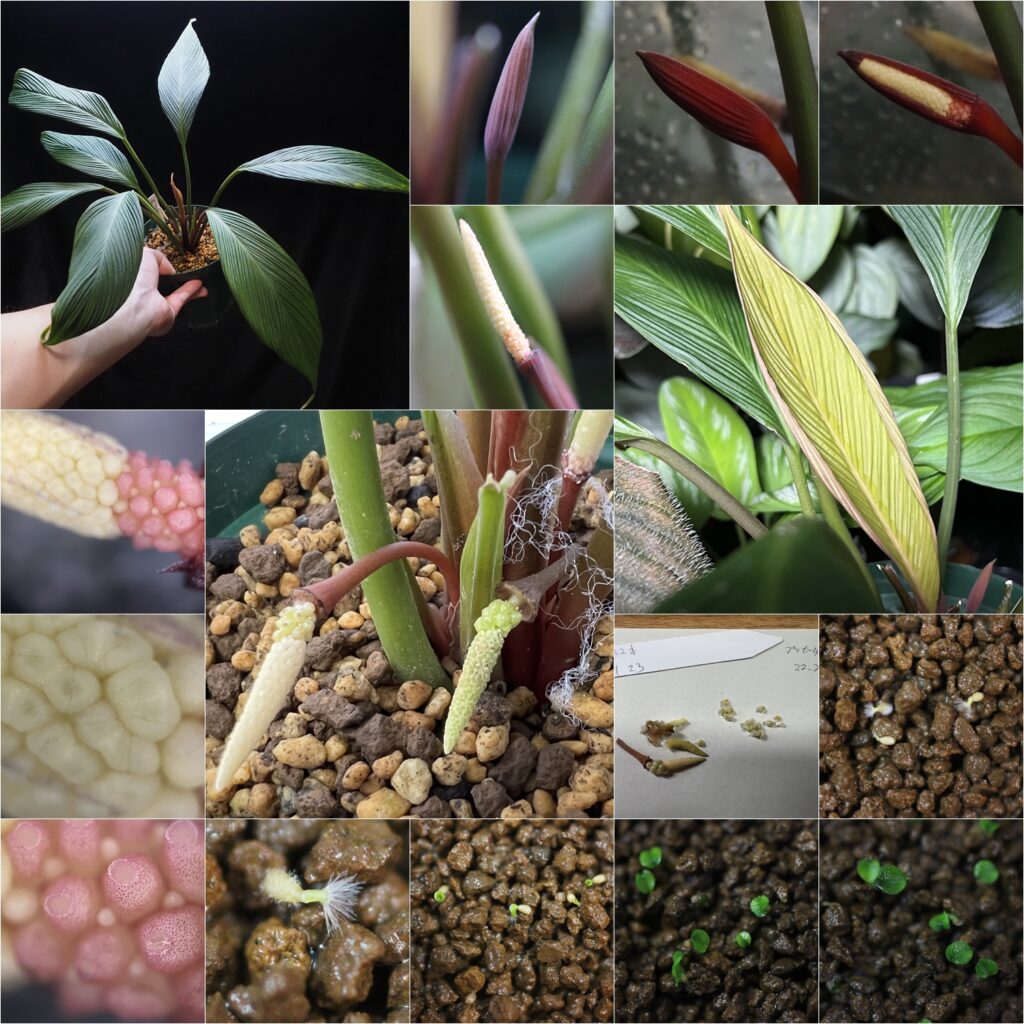
Homalomena plicata ‘蛇腹’ Aceh sumatera LA0217-03
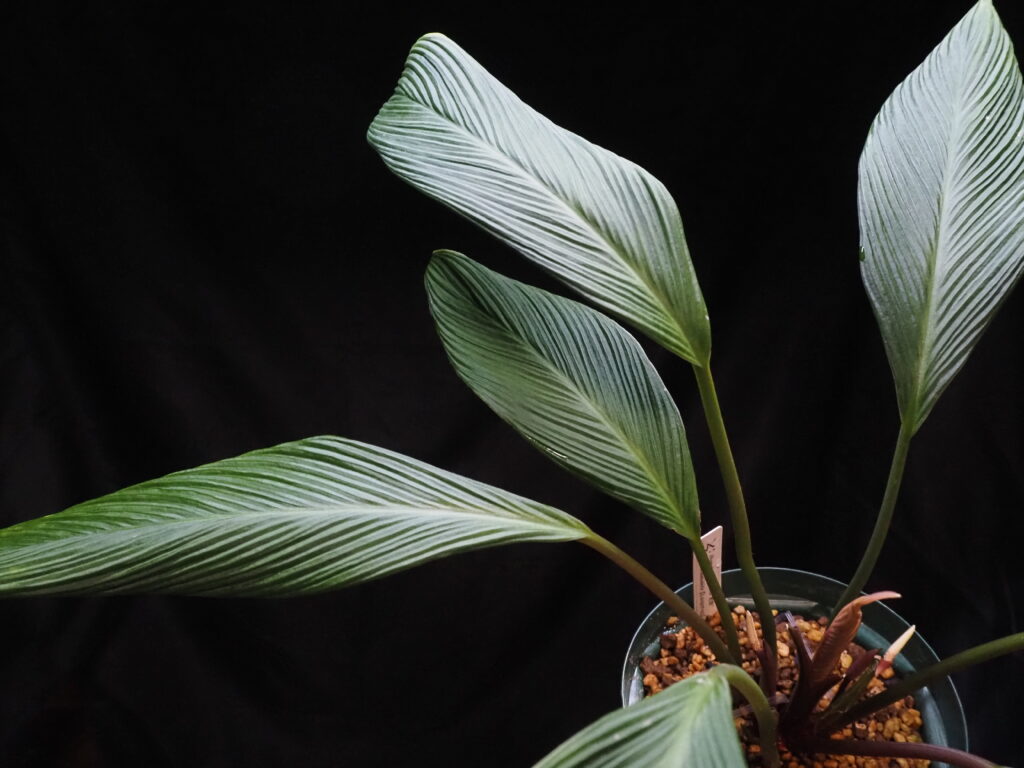
Care immediately after acquisition
Immediately after acquisition, the plant is not able to absorb water well, so humidity must be maintained at a very high level.
Because the leaves of this species are hardy, damage caused by lack of water tends to be difficult to determine from the outside.
For example, if the leaves are wilted and soft, it can be judged that they have already accumulated serious damage.
In such cases, float the plant in clean water for a few minutes to a few hours. If the damage is minor, the plant will recover quickly.
Inherent performance
It is an easy-to-grow species with a high ability to adapt to the environment.
It can be easily grown using moss or soil as a growing medium once its roots have grown.
It grows more quickly and easily in a humid environment, but its ability to adapt to the environment tends to decline when grown in a pampered environment.
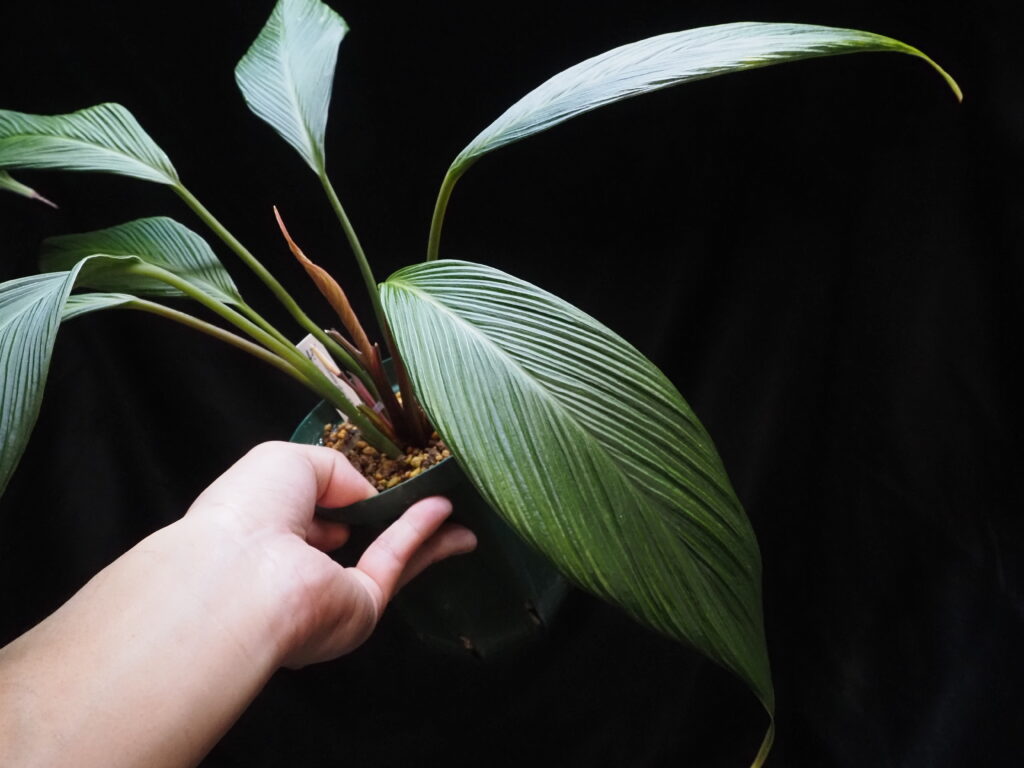
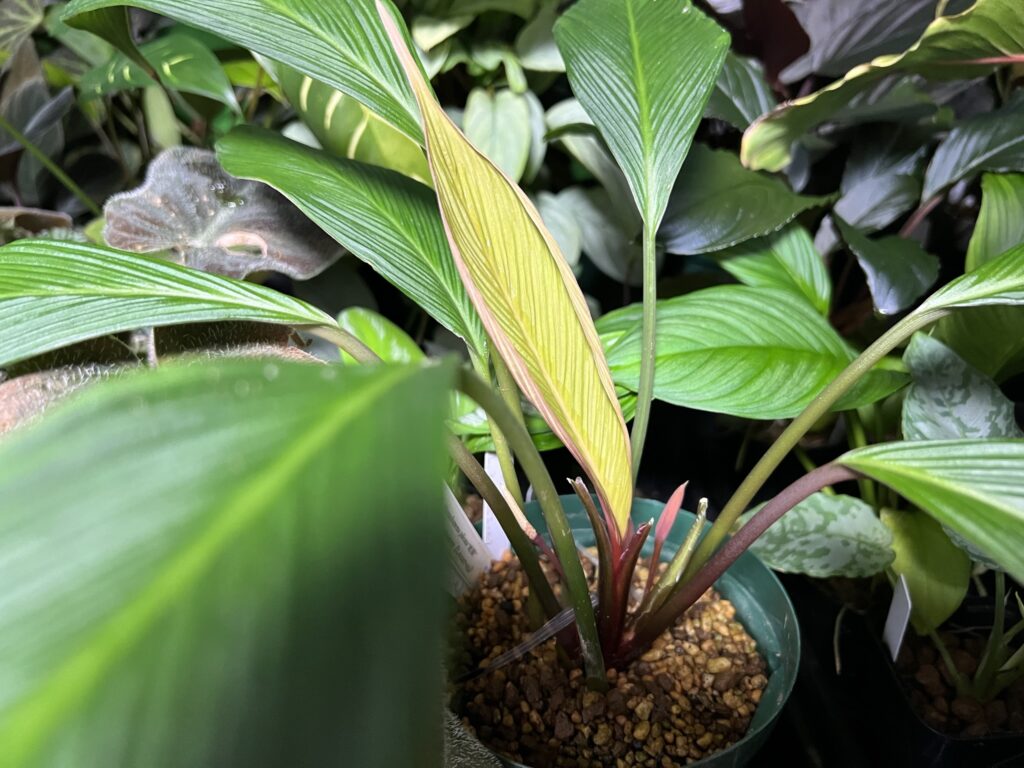
Appropriate trials for strengthening.
The way to train for strengthening while avoiding serious damage is to repeatedly dry and wet the medium while maintaining space humidity.
At this time, it is important to pay attention to the wilting of the leaves and to supply water appropriately.
Roots are very much strengthened by repeated experience of dry and wet conditions.
It achieves an increased ability to adapt to the environment under nurture and proper self-nutrient management.
All healthy plants are very beautiful.
Environment in the wild
I have seen field photos of this species growing not from flat ground, but from bare, wet bedrock or walls with accumulated mud and leaf litter.
Based on the structure of the leaves and the movement of the roots, I would guess that this species may have evolved in a bright environment with regular rainwater runoff.
Such an environment usually has dry and wet conditions within a 24-hour period, and during heavy rainfall, the unevenness of the leaves may be used to reduce the resistance of the water flow.
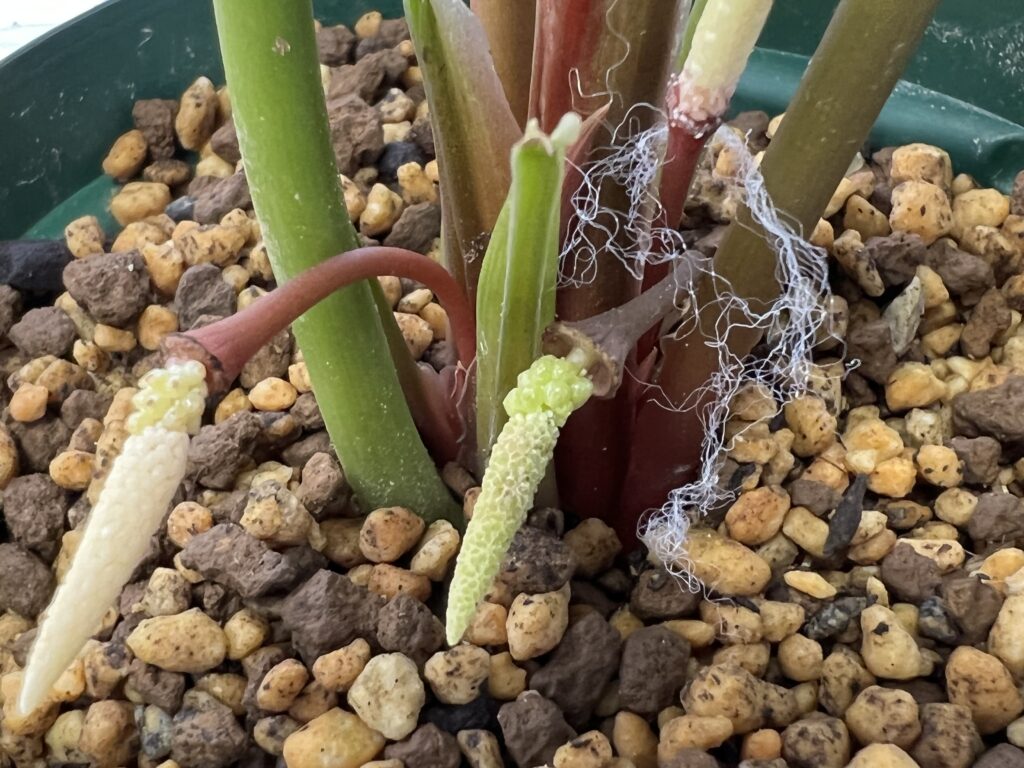

Summary of officially published information
Studies on Homalomeneae (Araceae) of Sumatera IV: Three new ornamental Homalomena (Chamaecladon clade) species
H. plicata P. C. Boyce & S. Y. Wong 2016
Homalomena plicata is a newly discovered plant species that hails from Sumatra, Indonesia.
While this species is distributed on the island, its exact location remains unknown due to its commercial value.
It grows as a rock plant on continuously wet granite cliffs in areas with wet hillside forests,
where seedlings are rarely buried in fallen leaves and small seeds attach to rocky substrates.
The classification of the Chamaecladon genus has been hindered by an incomplete understanding of
vegetative variation, and the historical types have been poorly preserved.
Nevertheless, the unique characteristics of these plants make them deserving of formal recognition.
The species name “plicata” is derived from the Latin term meaning “folded into folds or grooves”,
which aptly describes the distinctive leaf shape of Homalomena plicata.
It is of utmost importance to preserve and protect this unique species.
The commercial appeal of the plant should not overshadow its vital ecological role in its native habitat,
and we must ensure that it does not lose its natural surroundings or ecological significance.

